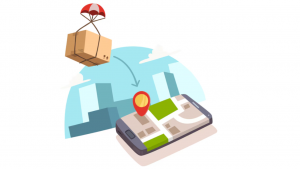How to Start A Clothing Brand in 2024 – A Complete Handbook
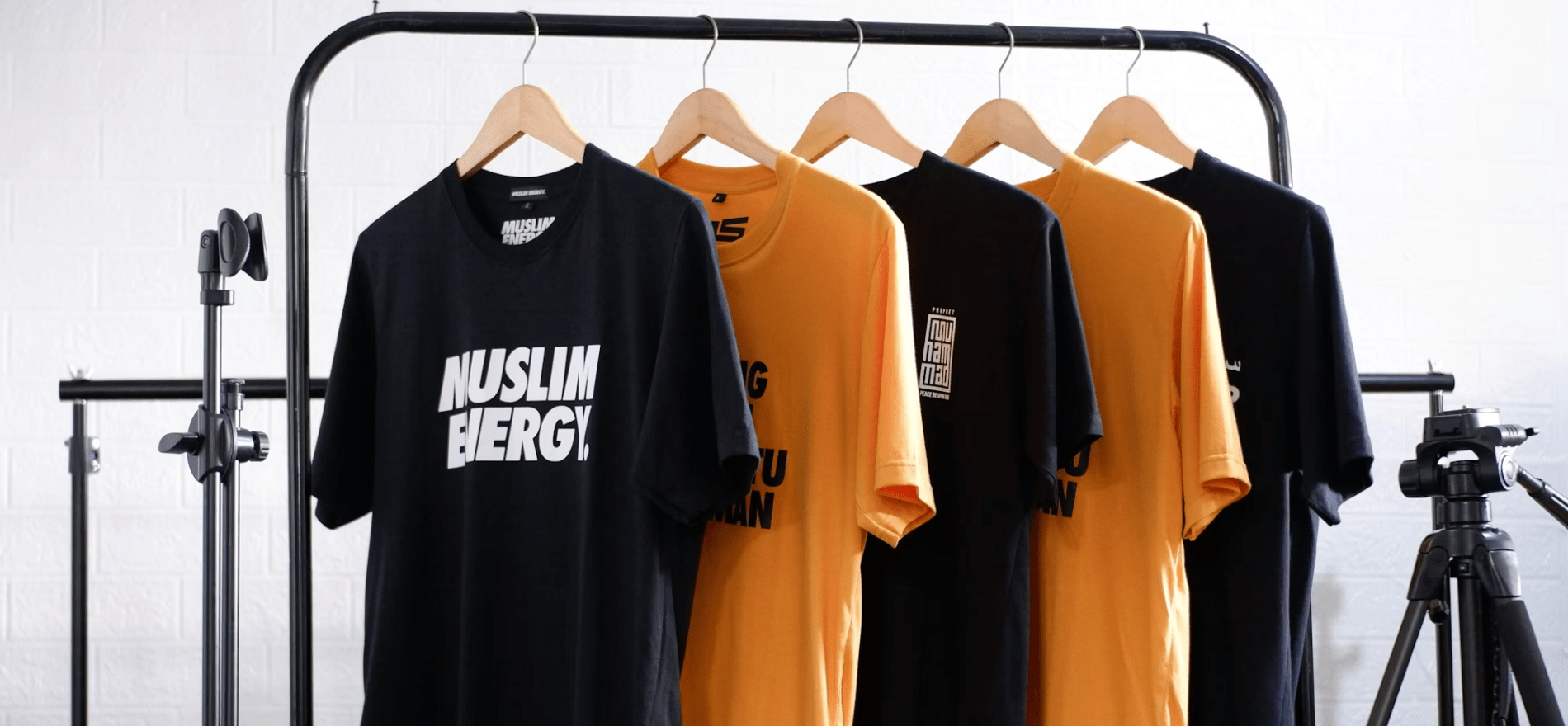
How to start a clothing brand in this competitive landscape?
Every few decades, the tech industry introduces innovative business models to assist people in launching their own stores.
Even with accessible options like print on demand, traditional business planning and developing a brand identity remain crucial to achieving success.
By thoroughly researching and planning these areas, you can make informed decisions about your business and forge strong connections with your customers.
This comprehensive guide will walk you through the steps to starting a clothing brand. You’ll learn how to identify your target market, create a basic business plan, establish your brand identity, and develop your clothing line.
How to Start A Clothing Brand: Step by Step
1. Identify Your Target Market

Your target market consists of the specific group of people you aim to sell your products to.
Understanding your target audience is crucial because they form the foundation of your business plan and branding efforts. Knowing who they are can build a strong brand identity and tailor your clothing business to meet their needs and preferences.
A prime example of a business with a clear target market is Alba Paris, which promotes a cruelty-free and vegan lifestyle. Their target audience shares these values, and the company leverages the eco-friendly benefits of print-on-demand. Their products feature designs that advocate for a cruelty-free lifestyle, fostering a sense of community among their customers.
To determine the target market for your clothing brand, consider the following questions to identify the characteristics of your potential customers. You don’t need to answer every question in detail; you can refine your answers as you learn more about your customers.
- Location: Are your customers local, national, or international?
- Demographics: What are their age, gender, occupation, and income level?
- Psychographics: What are their values, hobbies, lifestyles, and personalities?
- Market Trends: What trends do they follow?
- Buying Habits: How much do audience spend on clothes annually? Are they loyal to one brand or do they switch? What stores do they currently shop from?
Once you have these answers, think about your market’s desires or problems that your clothing brand can address.
2. Choose Your Business Model
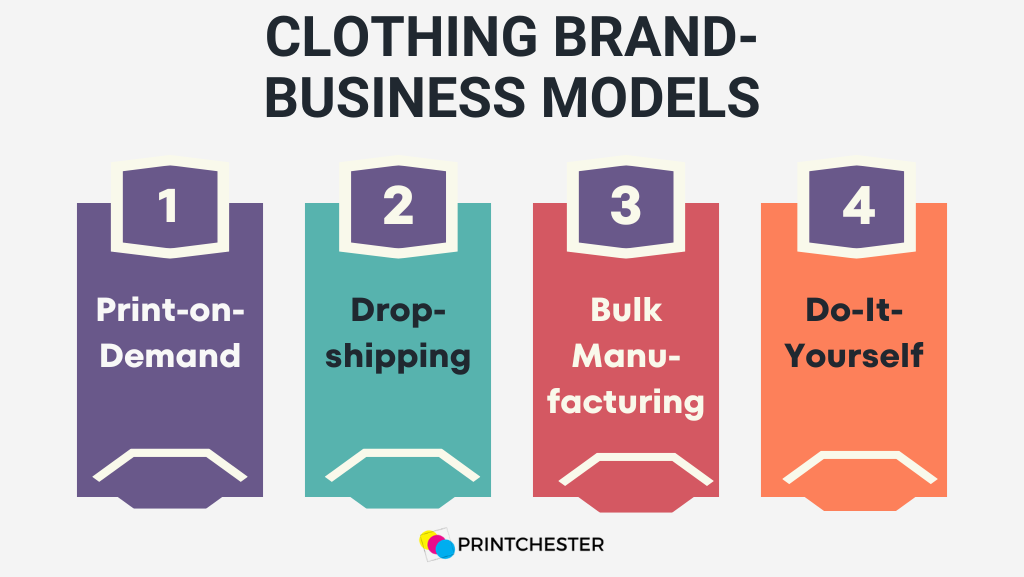
A business model is the cornerstone of any new fashion brand. It is a blueprint for how the company will operate, generate revenue, and provide value to its customers. It outlines the products or services offered, marketing strategies, and logistics and financial management.
Selecting the right business model is essential as it impacts production processes, customer engagement, brand identity, scalability, and long-term success. A well-thought-out business model can differentiate between a short-lived trend and a sustainable legacy.
Selecting the right business model is essential as it impacts production processes, customer engagement, brand identity, scalability, and long-term success. A well-thought-out business model can differentiate between a short-lived trend and a sustainable legacy.
Common Business Models for Clothing Brands:
Print-on-Demand

Print on demand is a flexible and modern solution, particularly attractive to new or small fashion brands looking to minimize risk. In this model, clothing or accessories are produced only when a customer places an order. Although the items are manufactured by a third party, brands can sell them under their own label.
This model requires a low initial investment and allows for experimenting with various designs without the risk of unsold inventory. It is ideal for brands targeting niche markets or offering personalized products. However, profit margins may be lower compared to bulk manufacturing due to higher unit costs, and control over production times and quality lies with the third-party provider.
Dropshipping
Dropshipping simplifies the process by having a third party manage inventory and shipping, reducing upfront costs and time commitments. This model is attractive for market entrants but often faces more competition due to a lack of product differentiation.
When combined with a print on demand provider like Printchester, dropshipping allows for custom product designs. As a brand, you focus on design, online store management, and marketing, while Printchester handles shipping and fulfillment.
The combination of dropshipping and print on demand facilitates starting a clothing line and testing new ideas quickly. It also enables faster business expansion, especially on a global scale.
Manufacturing in Bulk
Bulk manufacturing involves mass-producing products and maintaining an inventory that sells over time. A clothing business must either invest in its own production equipment or collaborate with an established clothing manufacturer to produce its lines.
Working with a wholesale clothing manufacturer requires meeting minimum order quantities (MOQs) for each product. For instance, a manufacturer might set an MOQ of 500 pieces, meaning you must order at least 500 garments at a time.
Suppliers set MOQs for several reasons, such as ensuring profitability, managing inventory, and reducing production costs.
For small businesses or new fashion designers, purchasing wholesale clothing can be challenging due to the need for substantial upfront investment in stock. This can tie up capital and increase the risk of excess inventory.
Large fashion brands, like H&M, utilize bulk manufacturing to produce new clothing lines and lease warehouses to store products until they are sold.
Ordering in bulk from a wholesale manufacturer can save money, but it also comes with risks. It is difficult for clothing brands to predict which sizes, designs, or products will sell. Additionally, they must handle the costs and logistics of storing and shipping their items.
Do-It-Yourself (DIY)
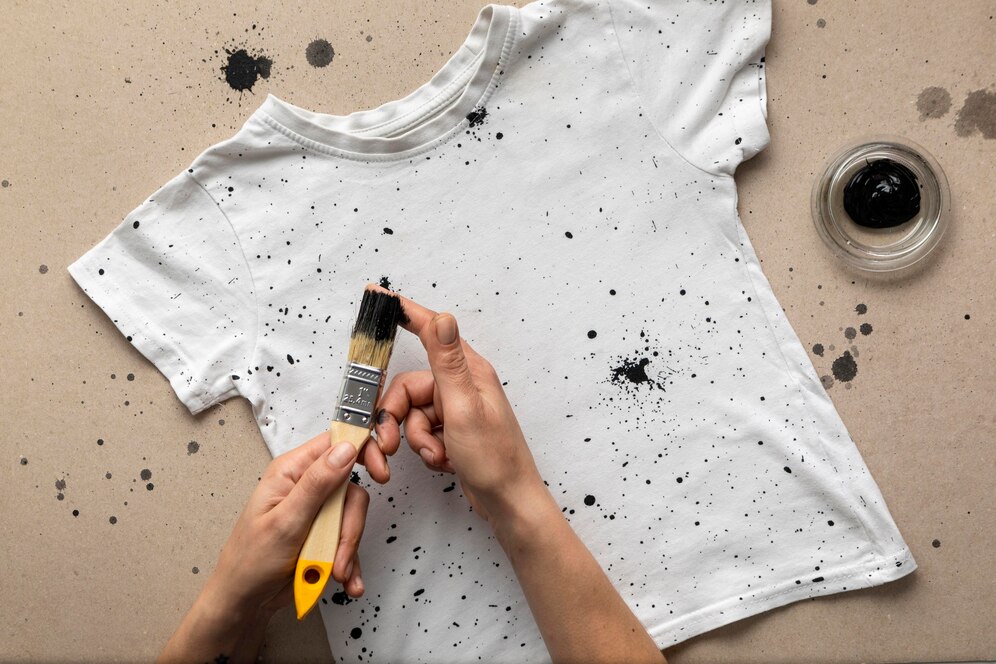
The DIY business model involves managing the entire production process yourself.
When you produce items on your own, production time is directly tied to the hours you spend on sewing and cutting. Expanding your business would require hiring additional staff to increase production capacity.
This type of clothing business demands more time and upfront investment than other models but allows for limitless creative possibilities in handmade clothing designs.
3. Find suppliers and sample their products
A business plan is essential for any fashion brand, whether a small startup or a successful enterprise.
Your business plan is a document that aligns your vision with practical steps, guiding your clothing brand from an idea to a thriving operation. It includes details on your product, target market, and profit strategy and serves as a blueprint for potential partners or investors.
Key Components of a Business Plan:

Market Research
Before starting a clothing business, conduct thorough market research. Understand your niche, customer preferences, and competition. This will help you see how your business fits into the industry and how you can stand out.
Business Structure
Choosing the right structure for your business is critical. It affects taxes, liability, decision-making processes, control, and fundraising capabilities. Decide whether you will operate as a sole proprietor or form an LLC, and define the roles and decision-making authority within your team.
Products or Services
Define what sets your products apart in the competitive fashion industry. Consider what unique value you offer, such as innovative designs, superior quality, or solutions to specific customer needs. Your unique value proposition will attract and retain customers.
Financing
Determine how you will finance your startup. Consider using personal savings, taking out a loan, or finding investors. Remember, production costs include making the clothes, marketing efforts, and setting up your online store. Provide practical financial projections, including expected costs, pricing, and revenue, to demonstrate the feasibility and profitability of your plan.
Sales Channels
Decide where and how you will sell your products. Will you operate an online store, a boutique, or both? Each sales channel can attract different types of customers.
Pricing Strategy
Set prices that cover your costs and reflect your brand’s value. For instance, if you use high-quality materials or create unique designs, you may opt for a higher price point. Understand the balance between production costs and what your target customers are willing to pay to set your retail prices effectively.
Marketing Plan
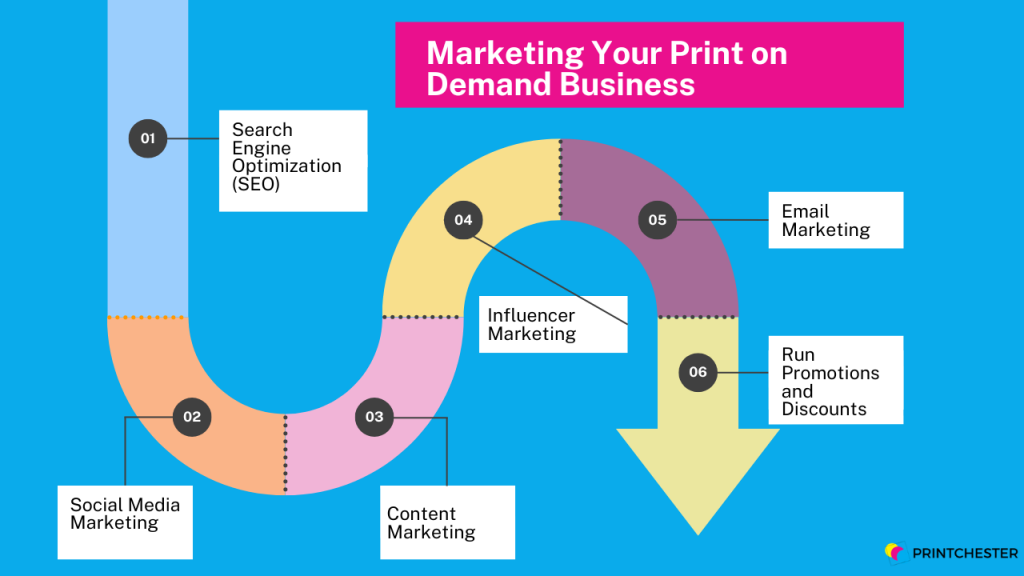
Develop a strategy to promote your brand. Effective marketing involves more than just posting on social media. Consider online advertising, email marketing, and using influencers to build customer loyalty.
Wrap up your business plan with supporting evidence, such as design sketches and market research data, to provide concrete backing for your ambitions.
4. Create Your Brand Identity
Your brand identity is the bridge connecting your business to your customers. It shapes how they perceive your brand and distinguishes you from competitors.
A strong brand identity reflects the quality standards you promise to your customers and significantly enhances customer loyalty and trust.
While anyone can start a clothing line, your brand identity helps you stand out in the competitive fashion industry and build lasting customer relationships. Once you have established your business fundamentals—such as your target market, products, and business model—you can begin to develop your clothing brand.

Deciding on Your Clothing Brand Name
Your brand name represents your business and gives customers an idea of what it stands for. To brainstorm your clothing brand name, start by jotting down words related to your brand, including adjectives, verbs, and abstract ideas. Compile a list of potential names and seek feedback from friends, family, or potential customers. Make sure the name you choose is unique and that the domain name is available by checking sites like GoDaddy.
Establishing Your Mission and Vision Statements
Your mission and vision statements clarify your goals and long-term aspirations. Reflect on your business plan and personal goals, and ensure these statements are simple, memorable, and concise (under 50 words each).
- Mission: What are you here to do? What are your values?
- Vision: What do you aspire to be once you achieve your goals?
Crafting Your Brand Story
People connect with stories. Sharing your brand story helps you build trust and form meaningful connections with your customers. As a new business, it’s important to let customers know who you are and what your business is about. Your “About Us” page is perfect for telling your story and highlighting what makes you unique. Make sure your formal or casual narrative aligns with your brand identity.
For example, Burt’s Bees uses storytelling to effectively convey their brand message. Founded in the 1980s by Burt Shavitz and Roxanne Quimby, they focused on using beeswax to create natural products, resonating with customers who value nature and the environment. Their story has helped them maintain a strong, consistent brand for over 40 years.
Designing Your Brand’s Visual Identity
Your brand’s visual identity includes elements like your color scheme, logo, and fonts, creating a cohesive look and feel that sets your clothing brand apart. Ensure consistency across all platforms to build brand recognition and trust. Whether your brand is playful and fun or elegant and sophisticated, your visual elements should reflect this in everything from social media to email newsletters.
Remember, your brand’s visual identity communicates with customers without words, making them feel a certain way when they see your brand. Keep it true to your values and ensure it resonates with your target audience.
5. Design Products
Now that you’ve laid the groundwork for your fashion brand, it’s time to design your clothing line.
Understanding the Clothing Production Process
Regardless of the type of clothing business you plan to run, general steps are involved in clothing production. To learn the process thoroughly, start by focusing on creating one clothing line.
Creating Your Clothing Designs and Mockups
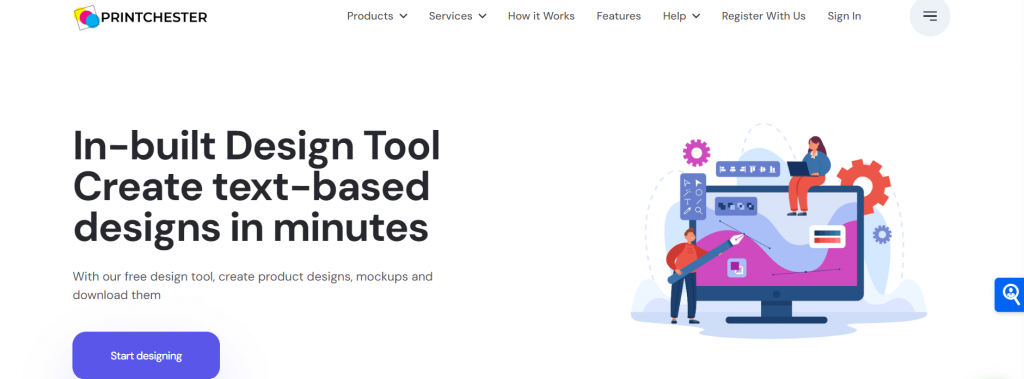
Stay informed about fashion trends through magazines, TikTok, and fashion shows. Align your designs with trends that appeal to your target customers. Use tools like Adobe Illustrator or Printchester’s Design Tool to create mockups of your designs on clothing items. The quality of your design is crucial for how your clothing looks in real life. Ensure you prepare perfect print files to achieve the best results.
Ordering and Testing Samples
Whether using a print on demand service like Printchester or working with a clothing manufacturer, it’s important to see your product designs in real life before selling them. Ordering samples, though a small investment, can save time and money by allowing you to make necessary adjustments before launching. Use your samples for photoshoots to showcase your clothing line on your storefront or social media.
By following these steps, you’ll be well on your way to creating a successful clothing brand that stands out in the fashion industry.
6. Develop Collections
Creating collections is an effective strategy to keep your clothing brand fresh and in tune with customer interests. Collections allow you to showcase your brand’s adaptability to trends and seasons, keeping your audience engaged and excited.
Getting Started
- Timing: Align your collections with the seasons, which will guide your choices in fabrics, designs, and color palettes. For example, a streetwear brand might launch a summer collection featuring light fabrics and vibrant colors, while a winter collection could focus on cozy hoodies in thicker materials and darker tones.
- Themes: Tailor collections to resonate with specific lifestyles or trends your customers are into. For inspiration, look at the latest trends on social media, check out fashion shows, or directly ask your customers what they’d like to see.
Planning your collections well in advance is crucial. This ensures you have enough time to get everything right—from design and production to marketing campaigns.
7. Set Up an Online Clothing Store
Setting up an online clothing store involves several key steps to ensure a smooth launch.
Choosing a Platform
- Ecommerce Platform: An ecommerce platform allows you to create your own online store with control over branding, layout, and customer experience. Examples include Shopify and WooCommerce.
- Online Marketplace: A marketplace allows multiple sellers to list and sell products. While you have less control over branding and customer experience, it’s a convenient option for reaching a broad audience. Examples include Amazon and Etsy.
Each platform provides guides and videos to help you get started.
Adding Products to Your Store
- Organize Products: Create clear categories to make it easy for shoppers to find what they’re looking for. Write detailed descriptions for each item, including size, material, and care instructions.
- Add Photos and Videos: High-quality photos and videos are crucial as customers want to see what they’re buying before making a purchase. If you’re arranging the shoot yourself, ensure the visuals accurately represent your clothing line. This helps potential customers understand if your product is right for them, even without seeing it in person.
8. Market Your Clothing Brand

Building your customer base requires ongoing effort and a strategic marketing and sales plan. This plan will outline how customers will discover your brand, be encouraged to make purchases, and remain loyal.
Initial Steps
- Explore Sales Channels: Experiment with various sales channels to determine what works best for you. Inform friends and family about your business, advertise online and on social media, share products on marketplaces, or seek pop-up shop opportunities in your area.
- Build Social Proof: After your first sales, request reviews from customers to build credibility. Positive reviews can help alleviate concerns potential customers might have about buying from a new store.
Social Media Advertising
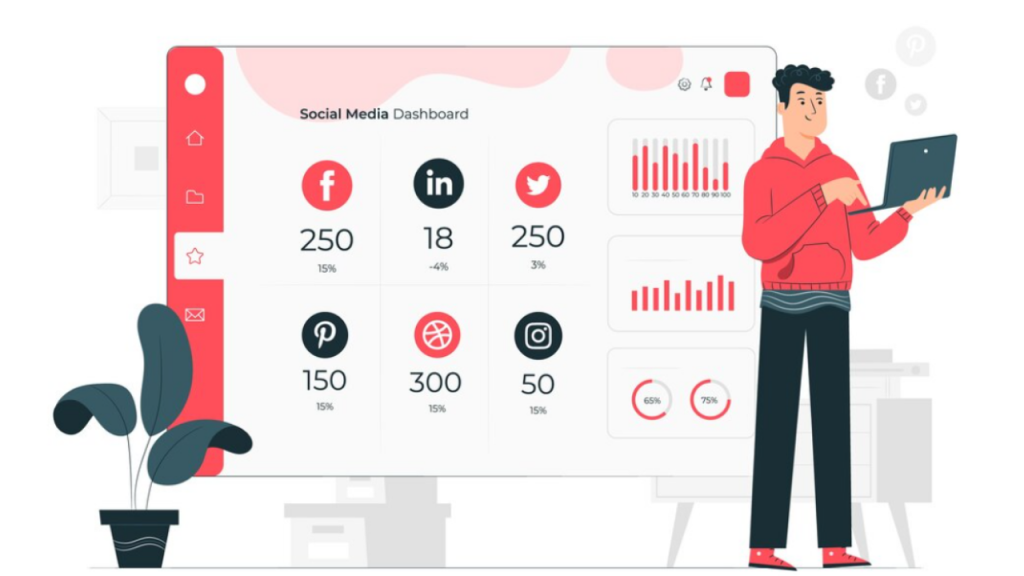
- Choose the Right Platform: Focus your efforts on the social media platforms most frequented by your target audience. Consistency is key; it takes time for ads to become effective, and people are often cautious about spending money on unfamiliar brands
- Maintain Consistent Branding: Ensure your branding is consistent across all platforms. Include social proof, like customer reviews, on your pages and website to foster trust.
- Create Effective Ads: Learn which ads perform best on your chosen platform. Use tools like Canva to design your ads, and start small to test different visuals and ad copies. Analyze what resonates with your audience before scaling up your campaigns.
Offline Sales Opportunities:
- Participate in Events: Look for pop-up markets, trade shows, or business conferences in your region. These events may require carrying stock and could involve travel costs, but they provide valuable networking opportunities and direct customer engagement, which can enhance relationships and boost morale.
Conclusion
There’s a wealth of information on starting a clothing brand in this guide, but you’ll discover even more as you build your business. Your brand is the core of your enterprise, influencing almost every decision you make and shaping customer perceptions.
Despite the evolving business models in the tech industry, staying true to your brand’s core values and addressing customer needs is crucial for long-term success.
Frequently Asked Questions
The cost to start a clothing line varies significantly based on factors such as the type of clothing, production scale, and materials used. Generally, it can range from a few hundred dollars to several thousand dollars.
Your chosen fulfillment method greatly affects costs. For instance, if you start a printed t-shirt business and handle printing yourself, you’ll need to invest in printing machines, fabric, ink, and packaging materials. Alternatively, using print-on-demand services shifts printing and shipping responsibilities to the service provider, reducing your initial startup costs.
Print-on-demand dropshipping is an effective way to start a clothing brand with limited funds. This method allows you to design products while your POD partner handles printing and shipping. This enables you to focus on sales without needing expensive printing equipment or inventory.
Choosing a unique and resonant fashion brand name involves several steps:
- Brainstorm phrases related to your brand values or mission.
- Draw inspiration from music, literature, art, film, nature, or even your name.
- Research the fashion industry for insights into popular trends.
- Note words that stand out and may interest potential customers.
- Experiment with combinations to create something catchy and unique.
- Check trademark databases to ensure the name isn’t already in use.
- Test your ideas with friends and family for feedback.
- Follow social media trends and create trending content.
- Stay updated on new platforms and features.
- Collaborate with influencers.
- Run giveaway campaigns.
- Prioritize video content.
- Research and consistently use relevant hashtags.
- Encourage users to share reviews and photos.
- Provide excellent customer service by promptly answering questions.
- Decide on a target market.
- Make a simple business plan.
- Create your brand identity.
- Register your clothing company.
- Design your clothing line.
- Decide on your pricing strategy.
- Produce samples and ask for feedback.
- Build an online store.
Starting a clothing line from home is feasible with a computer. Ecommerce platforms like Shopify or Wix allow you to create an online store without needing a physical location, minimizing upfront costs.
- Develop a compelling brand story and convey it consistently.
- Understand your target audience and design with their needs in mind.
- Stay aware of social media trends and find new ways to connect with customers.
- Provide an exceptional online shopping experience.
To legally own a clothing brand, you need to set up and register your business in your state and country. You can also purchase an existing brand and transfer ownership to yourself. It is advisable to consult a lawyer before buying a business to ensure everything is done correctly.
Experience in fashion design is not a prerequisite. Many successful clothing line owners begin with a passion for fashion, a clear concept, and a willingness to learn. Understanding your target market, having a clear brand vision, and committing to learning about the fashion industry are crucial. Design, production, and marketing aspects can be learned or outsourced.
This guide provides an overview of starting a clothing brand. Numerous online resources can further assist you in becoming a successful fashion designer.
Here are five important considerations when selecting the best t-shirt supplier.
- Order a sample to examine the product’s quality and gain firsthand experience with their services.
- Check to see if the product quality is consistent with your brand.
- Take note of their fulfillment time to ensure client satisfaction.
- Talk with their customer support to understand how it works.
- Read their terms and conditions, refunds, and replacement policies.
-
1.How to Start A Clothing Brand: Step by Step
-
2. Identify Your Target Market
-
3. Choose Your Business Model
-
4. Find suppliers and sample their products
-
5. Create Your Brand Identity
-
6. Design Products
-
7. Develop Collections
-
8. Set Up an Online Clothing Store
-
9. Market Your Clothing Brand
-
10. Conclusion

